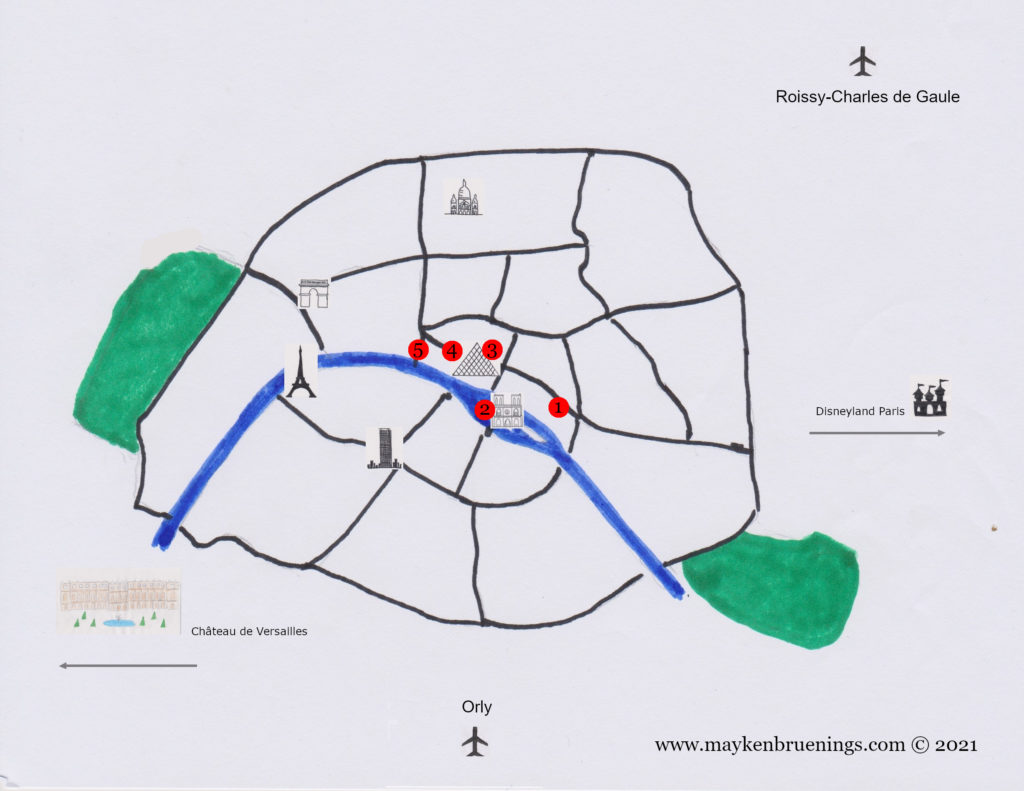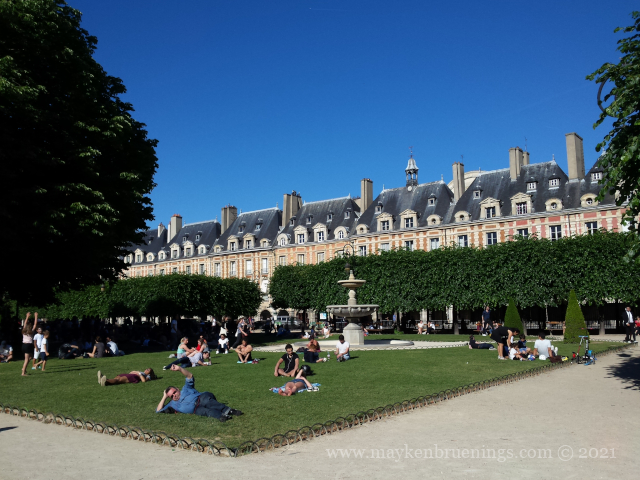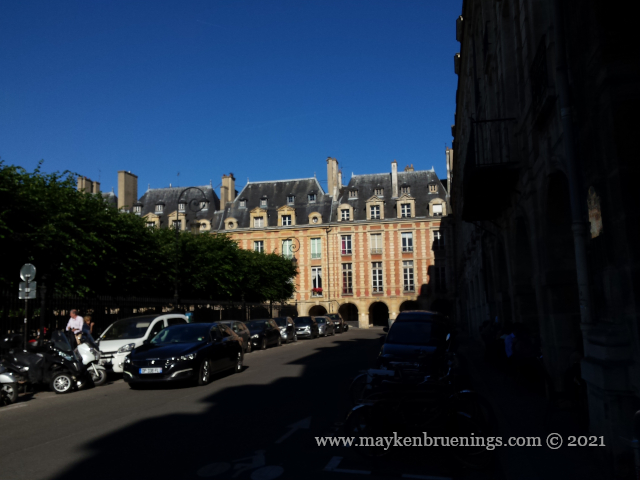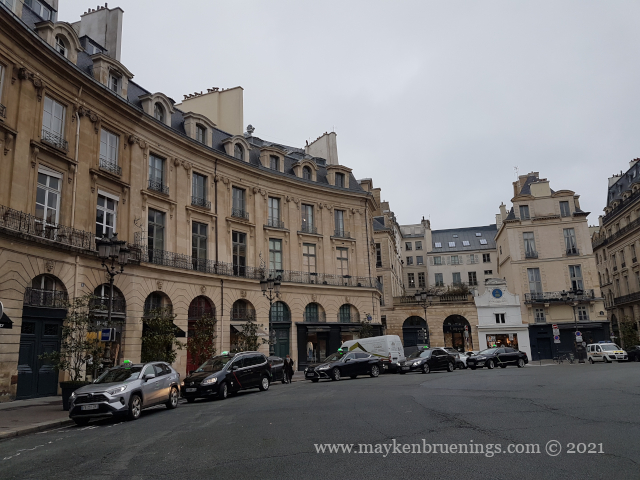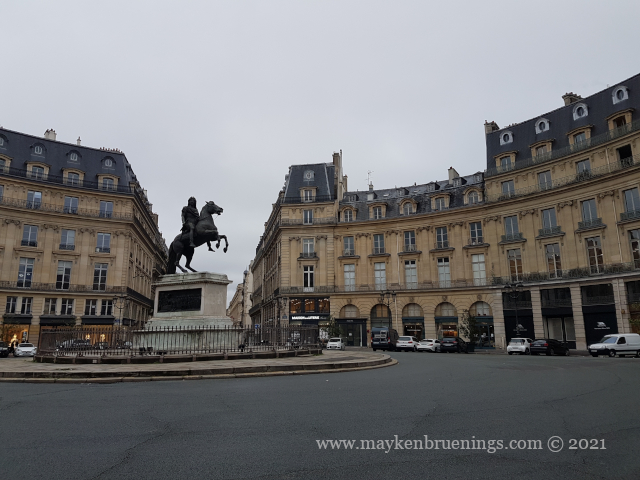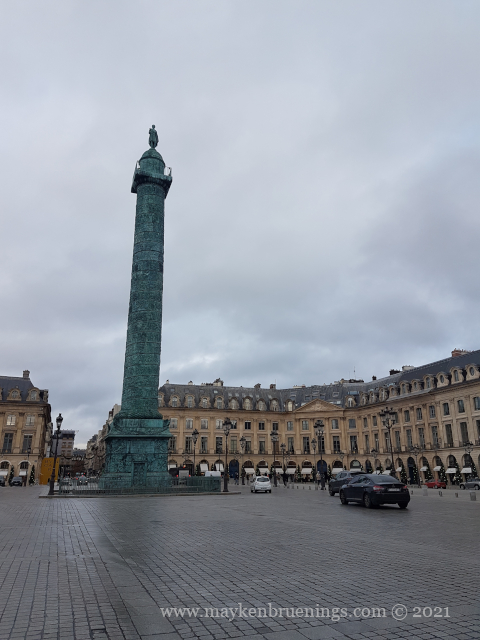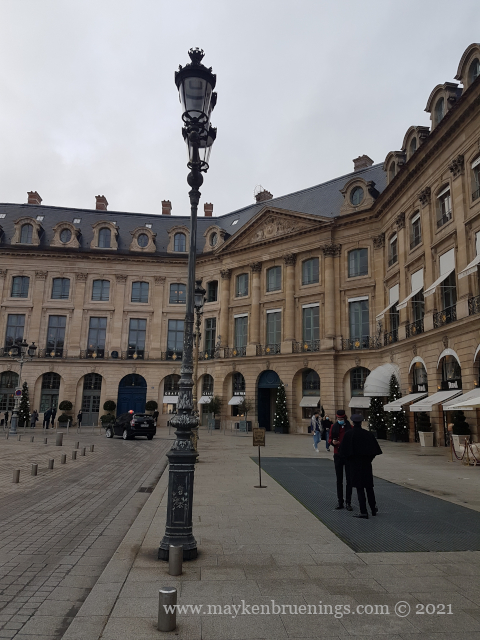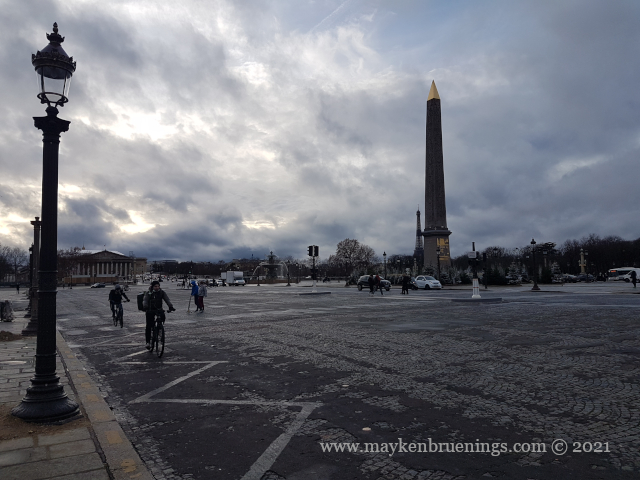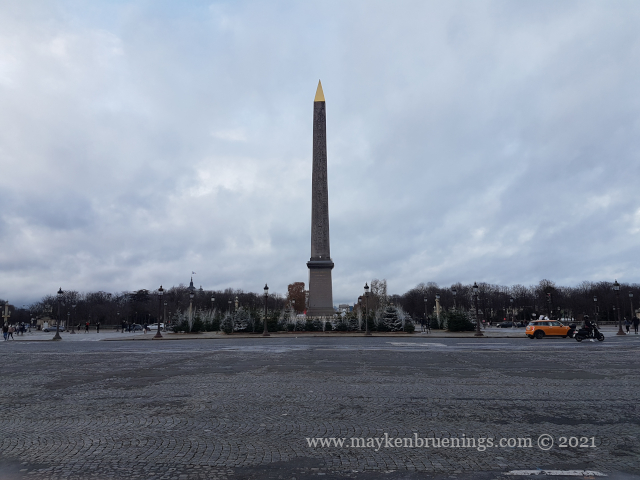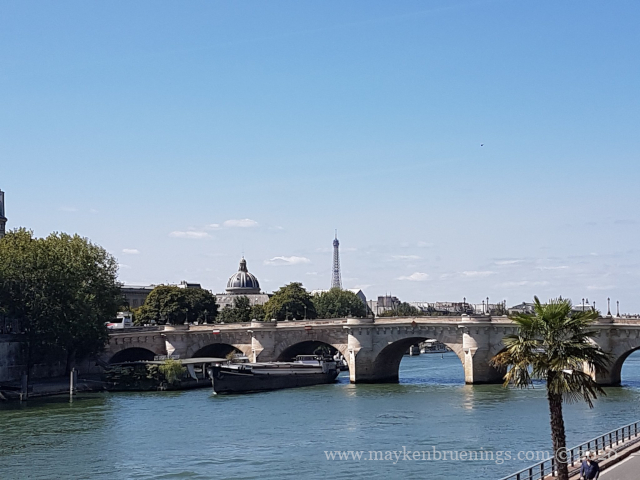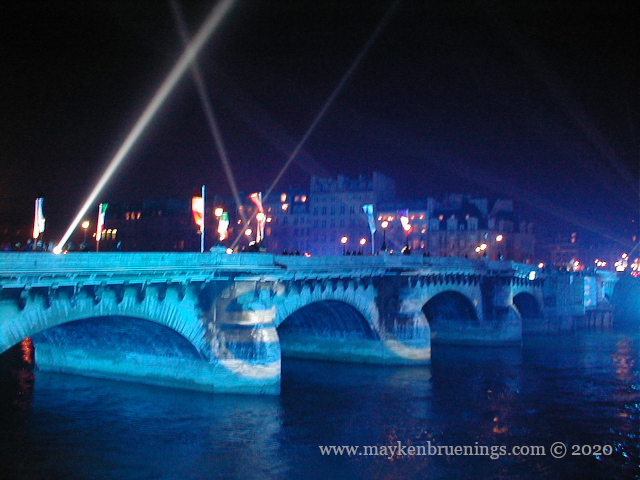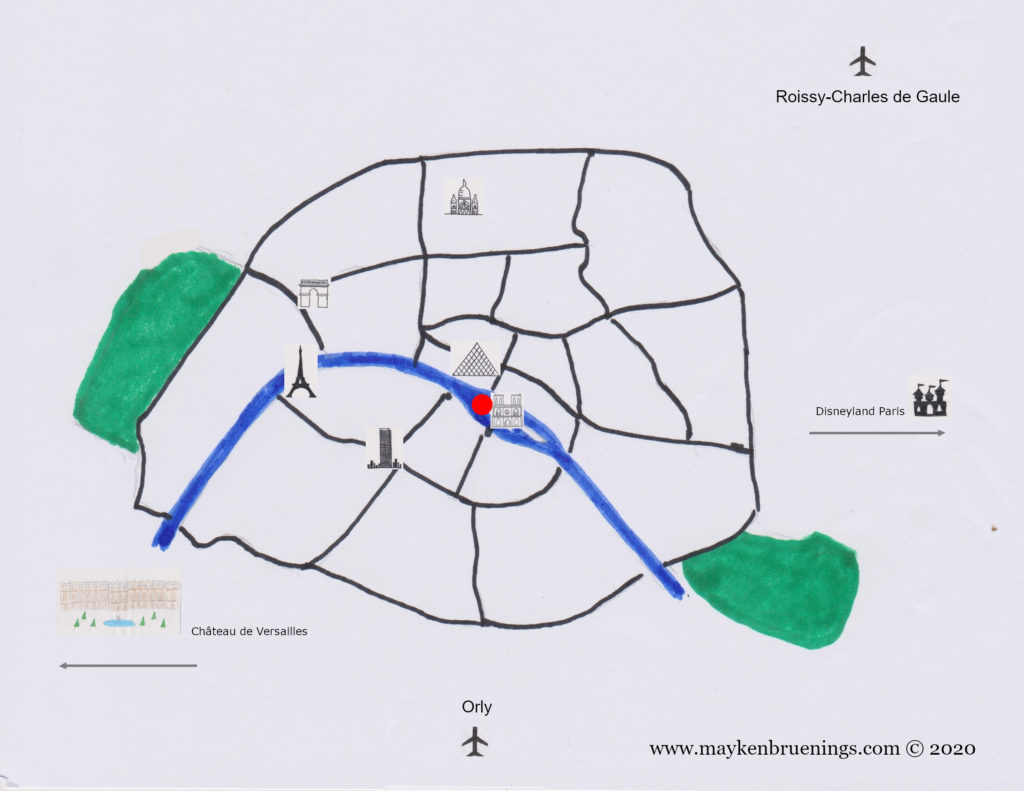In France, and even more so in Paris, a place royale, literally a royal square, was meant to surround a royal statue, mostly an equestrian statue in the Roman tradition, but later also pedestrian statues. People could walk in the square and admire the statue of their king.
There are five places royales in Paris that have undergone changes over the course of history.
1 – Place des Vosges
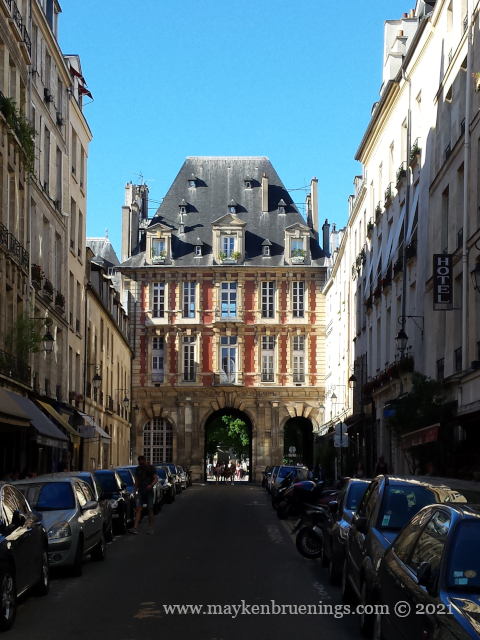
Initial name: Place Royale
Inauguration: 1612
Statue: Louis XIII
Origin of the name: The French Département Vosges (in eastern France), was the first to pay its taxes under the French Revolution.
Location: Marais, 4th arrondissement
Story: Ordered by Henri IV, it was inauguration at the occasion of the engagement of Louis XIII with Anne of Austria.
2 – Place Dauphine
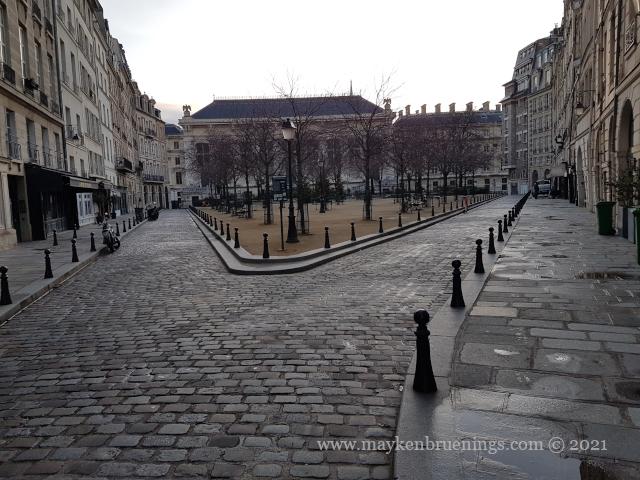
Inauguration: 1614
Statue: no statue in the square, but a statue of Henri IV stands in the middle of the Pont Neuf
Origin of the name: Named for the Dauphin, the heir apparent, the future Louis XIII.
Location: Île de la Cité, 1st arrondissement
Story: Created by Henri IV following the construction of the Pont Neuf. (It’s actually a triangle, by the way.)
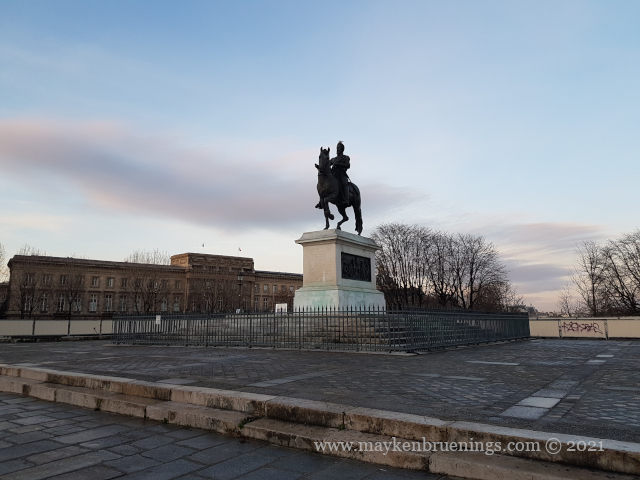
3 – Place des Victoires
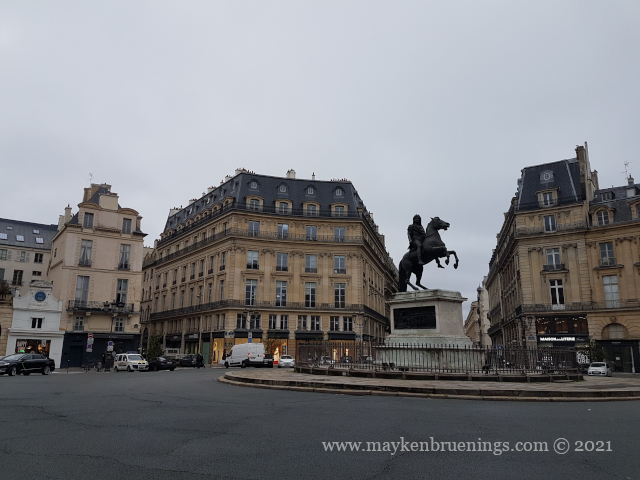
Inauguration: 1686
Statue: Louis XIV as Roman Emperor
Origin of the name: in celebration of the military victories of Louis XIV
Location: 1st and 2nd arrondissements
Story: Financed by the Duke de la Feuillade, Marshal of France, it is the first square created by a private individual to celebrate his sovereign. (Also it is actually a circle, not a square.)
4 – Place Vendôme
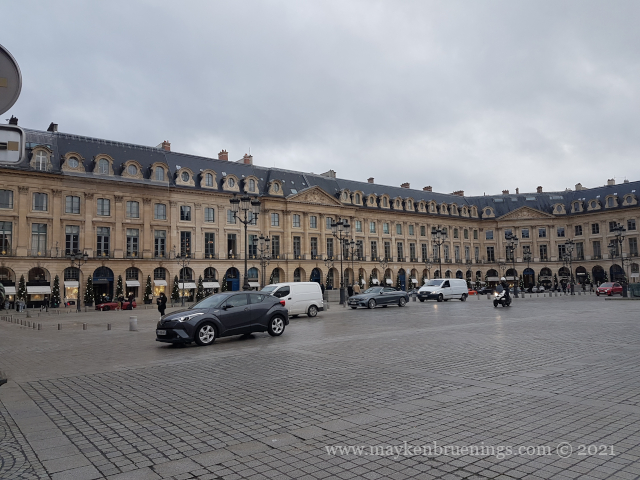
Initial name: Place Louis Le Grand (Louis XIV)
Other names: Place des Conquêtes (Conquests Square), and during the Revolution, Place des Piques (Pike Square, from the pikes on which were displayed the heads of the beheaded by the guillotine)
Inauguration: 1699
Statue: initially Louis XIV (destroyed in 1792), presently Napoléon Ier at the top of the column
Origin of the current name: The square was built in the place of the Hôtel de Vendôme, a hôtel particulier or townhouse.
Location: 1st arrondissement between rue de la Paix and the Tuileries Gardens
Story: Initiated by Louis XIV, his grand project never saw the light of day. In the end, the square was built by the City of Paris. One of its prestigious addresses houses the Ritz.
5 – Place de la Concorde
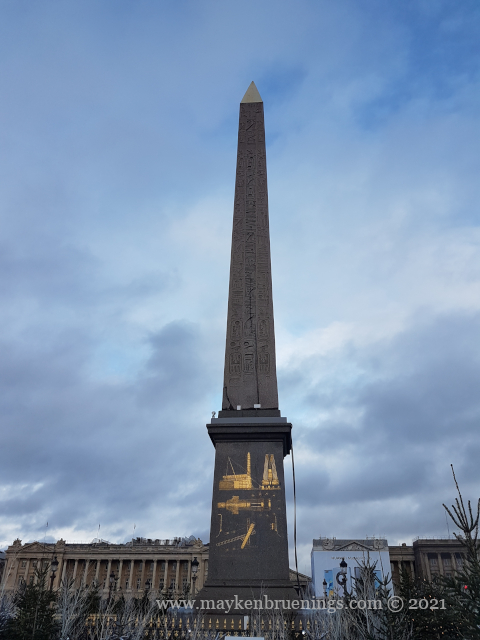
Initial name: Place Louis XV
Other name: Place de la Révolution
Inauguration: 1772
Statue: Louis XV, destroyed and replaced by the Egyptian obelisk
Origin of the name: Reconciliation of the French people at the end of the Terror (bloody period during the French Revolution)
Location: 8th arrondissement, between the Tuileries Gardens and the Champs-Élysées, on the “royal axis”
Story: During the Terror, it was the location of the guillotine where among many others, King Louis XVI and Queen Marie-Antoinette were beheaded.
